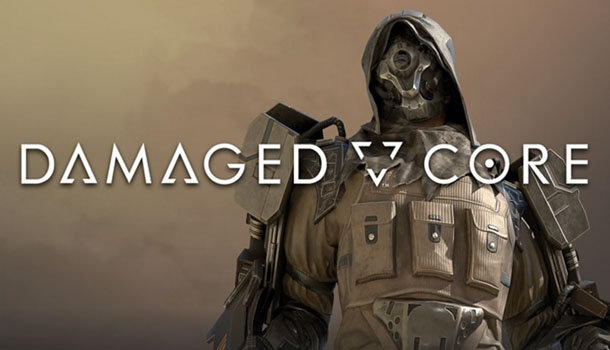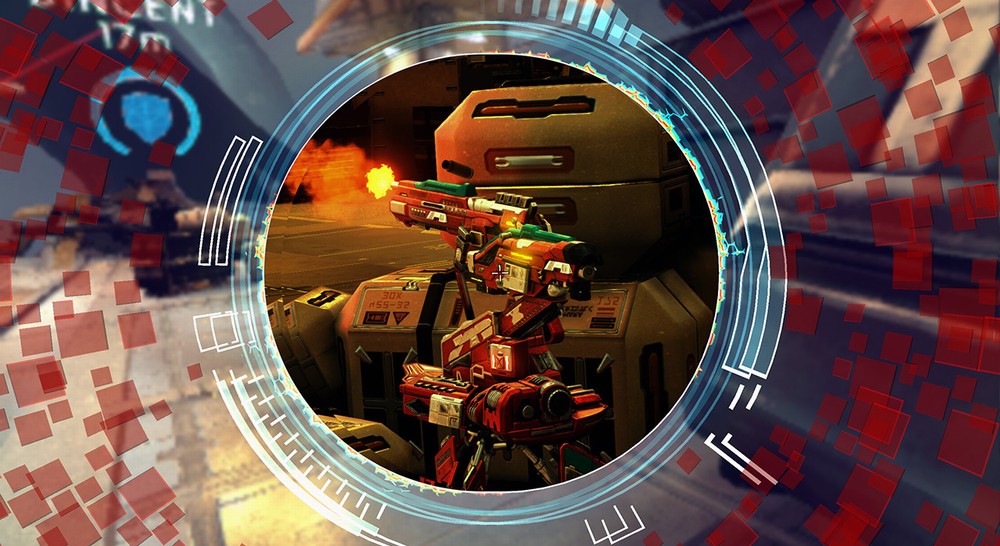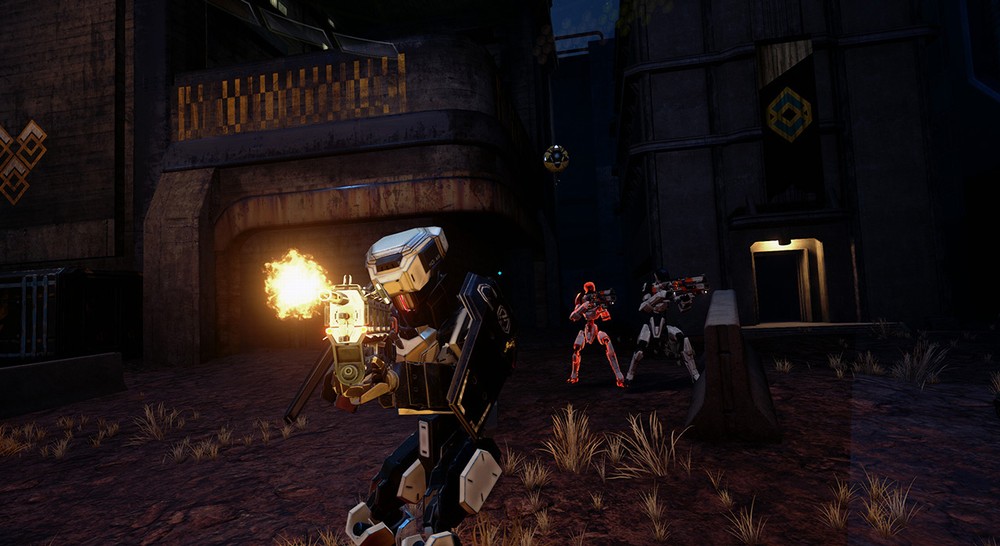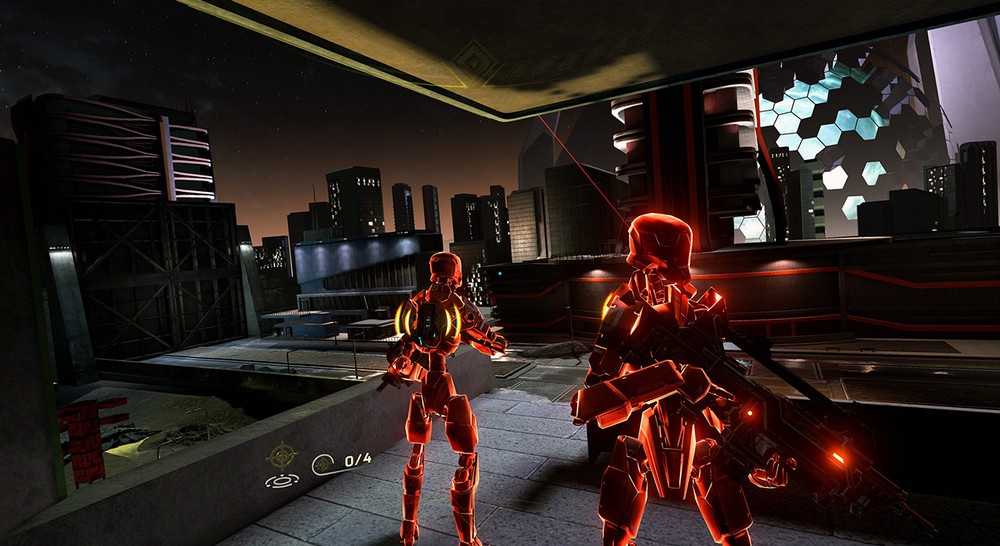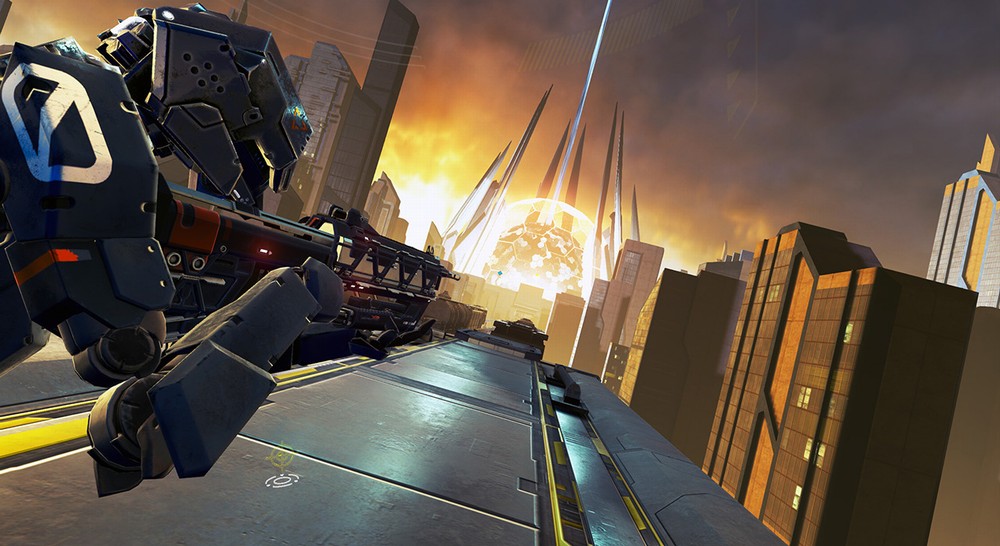I’m generally a big fan of High Voltage games although Conduit wasn’t one of my favorites, so when they chose that game to hype their new VR title, Damaged Core, I was a bit nervous. Thankfully, that was all about media/consumer recognition because their latest virtual reality FPS is nothing like Conduit or any other game currently available for the Oculus Rift.
Set in a dystopian future (is there any other kind) where an AI known as the Core is waging war on mankind using its vast army of robot warriors and drones, you will take control of a virus in a thrilling 8-10 hour campaign complete with engaging story written by Bioshock’s Drew Holmes. While labeled an FPS, Damaged Core is more of a stationary turret shooter, only you have endless possibilities when it comes to your turret location because almost anything can become your next turret.
Damaged Core is one of those rare FPS games that works, not despite of VR, but rather because it exists in VR. Games like Raw Data use teleport movement schemes to sidestep framerate and motion sickness concerns, but the unique sentient virus mechanic in Damaged Core is a stroke of game design genius. Sure, you are still teleporting around the levels, but it is now integrated into the very core of the gameplay. It all makes perfect sense once you have completed the short tutorial just prior to all hell breaking loose.
The control scheme reminded me of the game Watchdogs where you could hack into most any device then use that device to either do something or find another device to inhabit. In Damaged Core you play a virus capable of existing inside any of the robots you’ll be going up against as well as numerous cameras the humans use to observe the battle. Battles are fast and furious as you warp around the battlefield inhabiting up to 17 different types of robots and drones. There are environmental targets as well as the standard protocol of destroying everything that moves.
There is a slick layer of strategy embedded in the gameplay. The first thing you’ll learn is when hacking into a line of incoming robots always go for the guy in the back so you will instantly have all the others in front of you. 360 viewing is critical in some cases, and while the game can be played seated you may want to be in a swivel chair or just stand up. Once you start firing on other robots, they will know you are infected and turn their attention to you. If you are still inside that robot when it’s destroyed you will have to restart from the checkpoint, so the trick is to bail out of any dying robot, either into another nearby robot or a camera. Cameras are invisible to robots and a safe place to rest. Hacking is as simple as looking, holding the A button down and releasing when you find a suitable target.
The variety of robots is as awesome as it is strategically relevant. You have your normal foot soldiers then there are these big battle bots that are hack-proof until you shoot off their twin shoulder nodes. There are seeker mines that come swarming in by the dozens, and these cool flying drones that have orbital shield generators that must be destroyed before you can infect them.
Mission design is mostly escort missions or base defense with the occasional boss fight thrown into the mix. The first of these is an impressive robotic insect of gigantic proportions. There are eight levels in all, which will take anywhere from 8-12 hours to finish depending on how good you are at picking up the primary game mechanic as well as overcoming the random AI glitches that may have you restarting from a checkpoint.
By design, there is virtually no motion sickness at all, but you must have good situational awareness to play this game. You will be bouncing around from host to host every few seconds and constantly trying to establish your new orientation can be demanding. It’s usually best to pick hosts that are on the fringe of the battle rather than going straight for the soup. The game plays perfectly with the Xbox controller using just a few buttons and your head movement for aiming, which is tremendously accurate.
The presentation is one of the best out there for the Rift. While the graphics look more like the stuff you’d find on the Wii, there are some impressive design elements and special effects, and the framerate never falters despite movement being limited to mere camera panning. The 3D positional audio is flawless and actually helps to warn you of enemies outside your peripheral vision.
Damaged Core is a rare treat in the current and limited Oculus lineup of games. Oculus seems to be putting all their efforts into the upcoming Touch, leaving VR gamers to wallow in the depths of demos and shovel ware found on Steam. I was so happy to have a new game for my Rift, especially one that was actually good and made use of VR to enhance the very nature of the gameplay. When you’re ready to save the world from rampaging robots (again) and don’t want to get sick doing it, check out Damaged Core.

